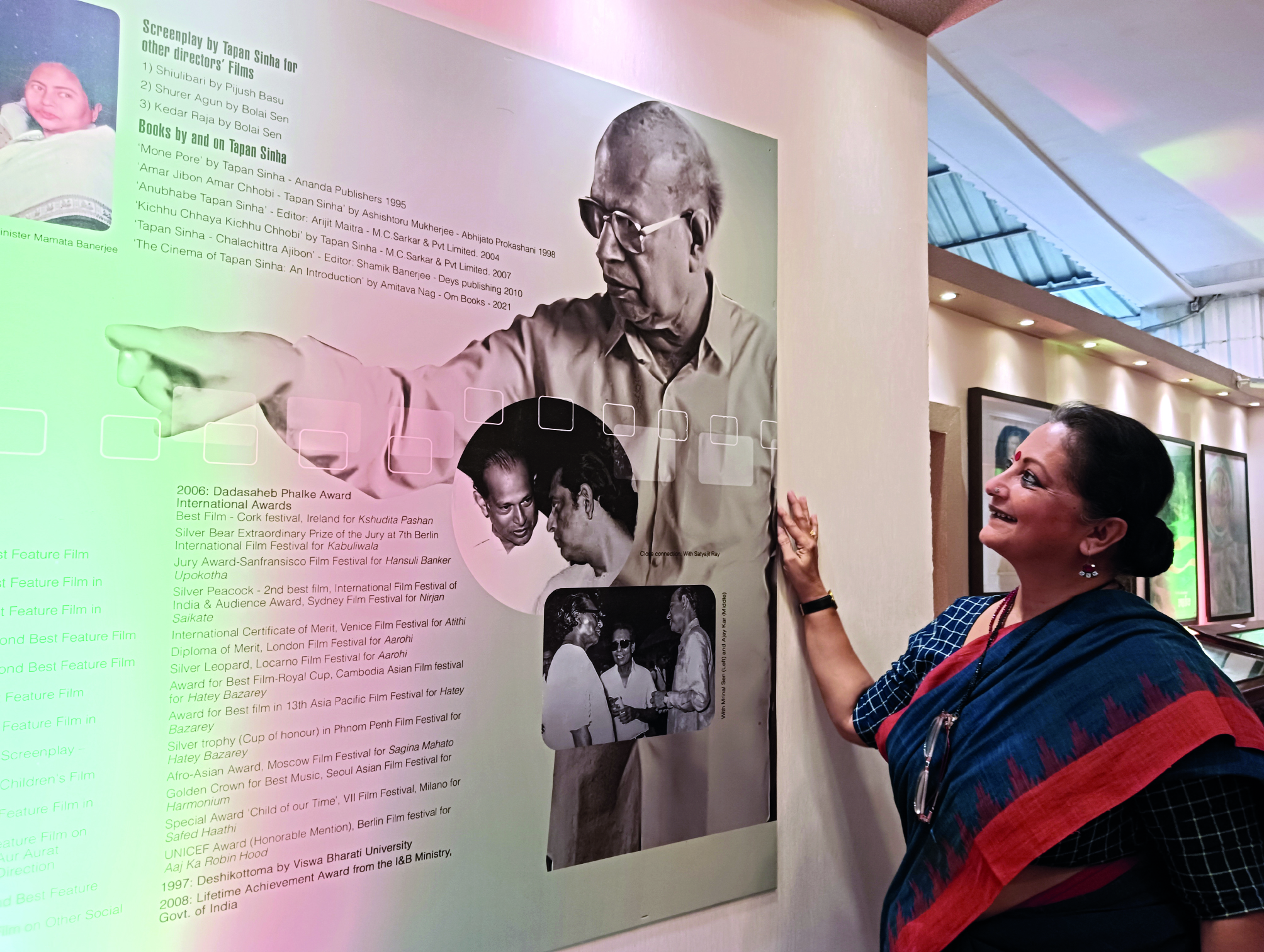Tapan Sinha exhibition at Kolkata International Film Festival: A treasure trove for cinephiles

KOLKATA: In Hansuli Banker Upokotha, a Bengali film based on Tarashankar Bandopadhyay’s novel and set in 1941, Tapan Sinha delves into life in rural Bengal, the harsh realities of the zamindari system that fuelled social inequalities and the evolution of societal perceptions over time. Sinha can aptly be described as a socially committed entertainer. Avoiding unnecessary experimentation, he consistently aimed to make films that were commercially viable, aesthetically appealing, socially conscious and thought-provoking.
The ongoing exhibition celebrating Tapan Sinha’s birth centenary at Nandan foyer during the 30th Kolkata International Film Festival (KIFF) highlights the incredible variety in his body of work. From Apanjan, Ek Doctor Ki Maut, Sagina Mahato and Harmonium to Adalat O Ekti Meye, Jhinder Bandi, Kabuliwala, Kshudhita Pashan and Bancharamer Bagan, Sinha never confined himself to a single genre. Walking past the walls adorned with his works, personal artifacts and booklets from films like Aajab Ganyer Aajab Kotha, Sagina Mahato, Golpo Holeo Shotyi and Kalamati, one cannot help but marvel at his remarkable legacy. It’s fitting that the KIFF committee has titled the exhibition ‘Tapan Sinha: A Man of All Seasons.’ As the KIFF draws to a close on Wednesday, this exhibition is a must-visit for all movie lovers.
Filmmaker Sudeshna Roy, who curated the exhibition, said how the Tapan Sinha Foundation along with Anindya Sinha, Arijit Maitra and Tapati Guha Thakurta, contributed to curating both the Sinha and Arundhati Devi exhibitions on display at KIFF. “We’ve created an eight-minute loop showcasing insights from various film personalities on the range of his films, whether critically acclaimed or commercial hits. Tapan Sinha deserves a comprehensive evaluation and documentation,” said Roy.
While Sinha has often been described as one of India’s finest “middle-of-the-road” filmmakers, his work was somewhat overshadowed by the three legendary Bengali directors — Satyajit Ray, Mrinal Sen and Ritwik Ghatak. However, his contemporaries held him in high regard. Sen once remarked: “We differed in many ways and I didn’t always agree with him, but that doesn’t mean I don’t consider him one of India’s finest directors. I’ve never met a human being as kind and powerful as Tapan Sinha.” The exhibition also features stills from the shooting of films like Raja and Jatugriha with Sinha directing Uttam Kumar and Arundhati Devi. In a displayed video, director Raja Sen reflected, “We could never match Tapan da’s level of discipline.”
Satabdi Roy, who made her acting debut opposite Prosenjit Chatterjee in Sinha’s acclaimed film Atanka (1986), inaugurated the exhibition. “Both as a director and as a person, he was immensely disciplined. He taught us how to speak and carry ourselves for the film,” she said. Visitors can also explore Sinha’s personal belongings, the original soundtrack recording of Harmonium, certificates for his numerous awards, and several books and scripts. For Sonali Gupta, the exhibition evoked nostalgia. She was still in school when she acted in Harmonium (1976), one of Sinha’s most celebrated works. “He was a close friend of my father, filmmaker Dinen Gupta, who also shot Hatey Bazarey. My mother, actress Kajal Gupta, appeared in Jatugriha. For me, Tapan kaku was family,” she said, gazing at a large portrait of the legendary director.



